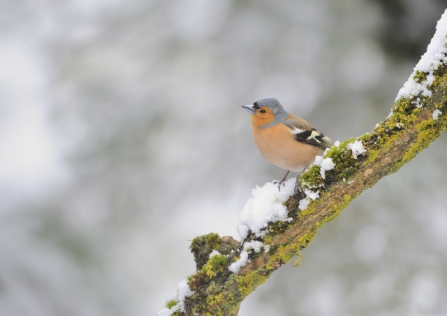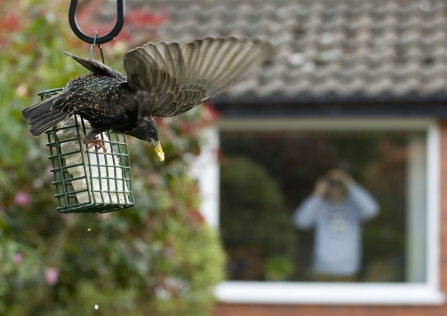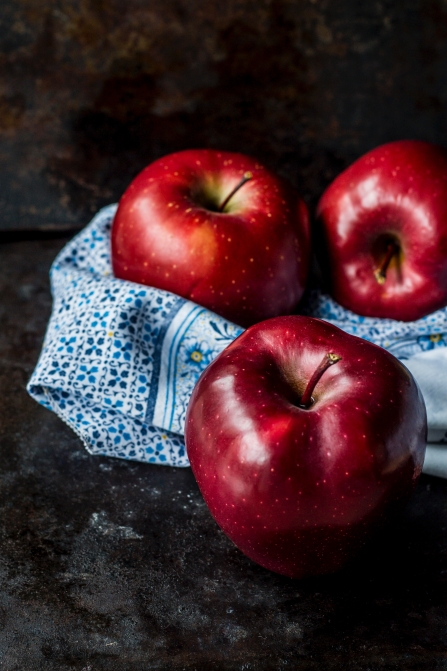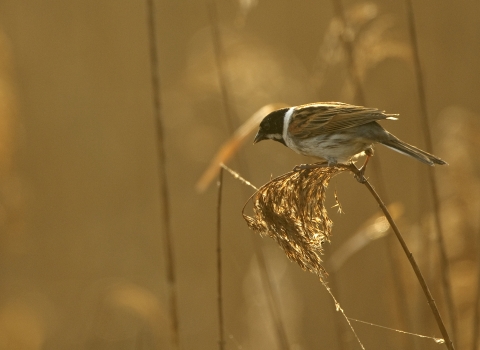Feeding birds in your garden is a lovely way to not only feel closer to nature but make a difference to the wildlife on your doorstep. With habitat loss and food shortages sending many bird species into freefall (including garden favourites like starlings and house sparrows), they need all the help they can get.
Not sure how to feed birds in your garden?
Ben Hall/2020VISION

Fergus Gill/2020VISION
Should you feed garden birds all year round?
Birds benefit most from the food we leave out during winter, when their natural foods are very scarce, but you never know what the weather will do these days and food shortages can occur at any time of the year. Feeding all year-round means there is always that back-up supply for wild birds, but the things you feed them do need to change with the seasons.
What to feed garden birds in winter
The winter months are when birds need our help the most, especially during particularly cold snaps. Leaving out water and high-energy foods at this time of year gives your garden birds chance to refuel and keep their fat reserves topped up – you may even find that you need to refill your feeders twice a day!
High quality foods with a high fat content include things like suet blocks and fat balls (remove the netting and place them in a feeder so birds don’t trap their feet), seed mixes that include suet pellets and dried mealworms, or even homemade bird cake.
What to feed garden birds in spring
Garden birds get very busy during spring, building their nests before raising a ravenous brood of chicks which they’ll continue to feed for a few weeks even after they have fledged. It’s time to switch up what you put in your feeders.
Spring is a time for high energy, moisture-rich and protein-rich bird food that won’t harm chicks. Though most birds will visit tables and feeders to keep themselves topped up – relying on natural foods like caterpillars for their young – a serious food shortage may drive parent birds to offer chicks things from your garden.
Live mealworms are a fantastic source of energy and protein for wild birds and won’t choke chicks. You can also put out dried mealworms, but soak them in water first. Black sunflower seeds, mild grated cheese, pinhead oatmeal and peanut-free seed mixes are also great, while foods to avoid include loose peanuts, large chunks of bread and fats.
What to feed garden birds in summer
A lot of questions surrounding when to feed garden birds crop up around summertime. While this is traditionally a time of plentiful wild food, garden birds can still do with a helping hand.
An easy food source is great for inexperienced young birds, and moulting adult birds will be grateful of a nearby food source while their new feathers come through – the moulting process requires lots of energy. Leave out smaller quantities of the food you would during spring.
What to feed garden birds in autumn
The autumn bounty provides a plentiful source of food for birds, so it’s the time of year where you might notice a drop in the number of birds visiting your feeders.
The amount you’ll need to feed garden birds during autumn is minimal. Test out quantities to see how much food the birds eat and then put out the optimum amount, so nothing goes to waste. A high-quality seed mix is a great option for this time of year, as well as things like black sunflower seeds and sunflower hearts.

Ben Hall/2020VISION
Which birds like what food?
While some birds eat pretty much anything, others have specific dietary needs. Here is a quick guide to which birds like sunflower seeds, peanuts and other foods.
- Sunflower hearts: Blackbird, blue tit, chaffinch, goldfinch, great tit, greenfinch, house sparrow, long-tailed tit, robin.
- Seed mixes: Blue tit, chaffinch, dunnock, goldfinch, great tit, greenfinch, house sparrow, robin, starling.
- Peanuts: Blue tit, chaffinch, great spotted woodpecker, great tit, greenfinch, long-tailed tit, wren.
- Suet: Blue tit, great spotted woodpecker, great tit, long-tailed tit, robin, starling, wren.
- Live mealworms: Blackbird, blue tit, dunnock, great tit, house sparrow, song thrush, starling, wren.
- Black sunflower seeds: Blue tit, chaffinch, goldfinch, greenfinch, house sparrow, siskin.
This is just a selection of garden bird species, but our friends at Vine House Farm have produced a fantastic guide to ‘Who eats what?’.

Photo by Roberta Sorge on Unsplash
What to feed birds from the kitchen
Feeding birds doesn’t have to cost the earth, and you can keep your garden visitors happy with a few things from your kitchen.
While cooking fat is bad for birds, raw lard and beef suet are healthy sources of energy that won’t smear onto birds’ feathers, encourage the growth of bacteria or be too salty.
Mild grated cheese is a favourite among robins, wrens and dunnocks, while uncooked porridge oats are taken by a range of species. Dried fruits like raisins, sultanas and currants will be snapped up by blackbirds, song thrushes and robins, and apples and pears are popular with thrushes, tits and starlings. Pastry scraps, cooked or uncooked, are excellent, especially if made with real fats.
More bird feeding tips
- Tweak the quantity of the food you put out according to demand. Letting uneaten food accumulate can spread disease and attract rats.
- If squirrels are taking over your feeders, try placing them well apart with no connecting route, or invest in squirrel-proof feeders. Rumour has it that greasing the poles of ground feeders can also help, as squirrels slide back down when they try to gain a foothold!
- Store bird food in a cool, dry place, in sealed containers that rodents can’t nibble their way into.
- Choose feeders specifically designed for your chosen type of food. Nijer seeds would simply fall out of a normal feeder, while fat balls need a ‘cage’ feeder.
- Always take fat balls out of the mesh bags they come in, or buy them loose in a tub, as birds can get their feet trapped in the mesh and die.
- Clean your feeders with disinfectant once a week to avoid the spread of diseases like salmonella and trichomoniasis.
- Provide clean, fresh water which your garden birds can drink and bathe in. If the water freezes over during winter, simply remove the ice and top it up.
Place bird feeders away from cover where cats could be lurking, but not so far that birds don’t have somewhere to hide from predators like sparrowhawks at short notice. Grouping bird feeders together can also offer ‘safety in numbers’.
If you would like more information about how to feed birds in your garden, or are ready to stock up on food for your garden visitors, click the button below to visit the Vine House Farm website. As well as selling really high-quality bird food, they carry out conservation work on their land and donate 4% of each sale from our area back to us.


